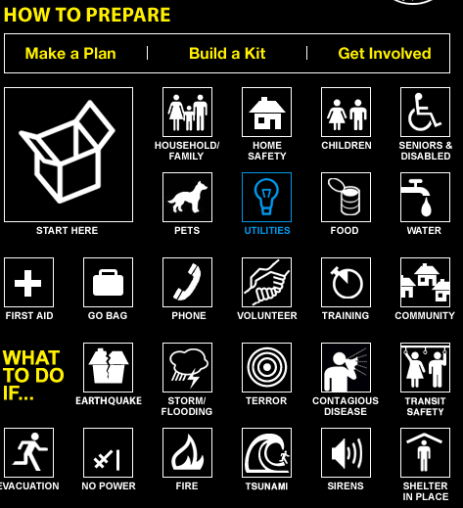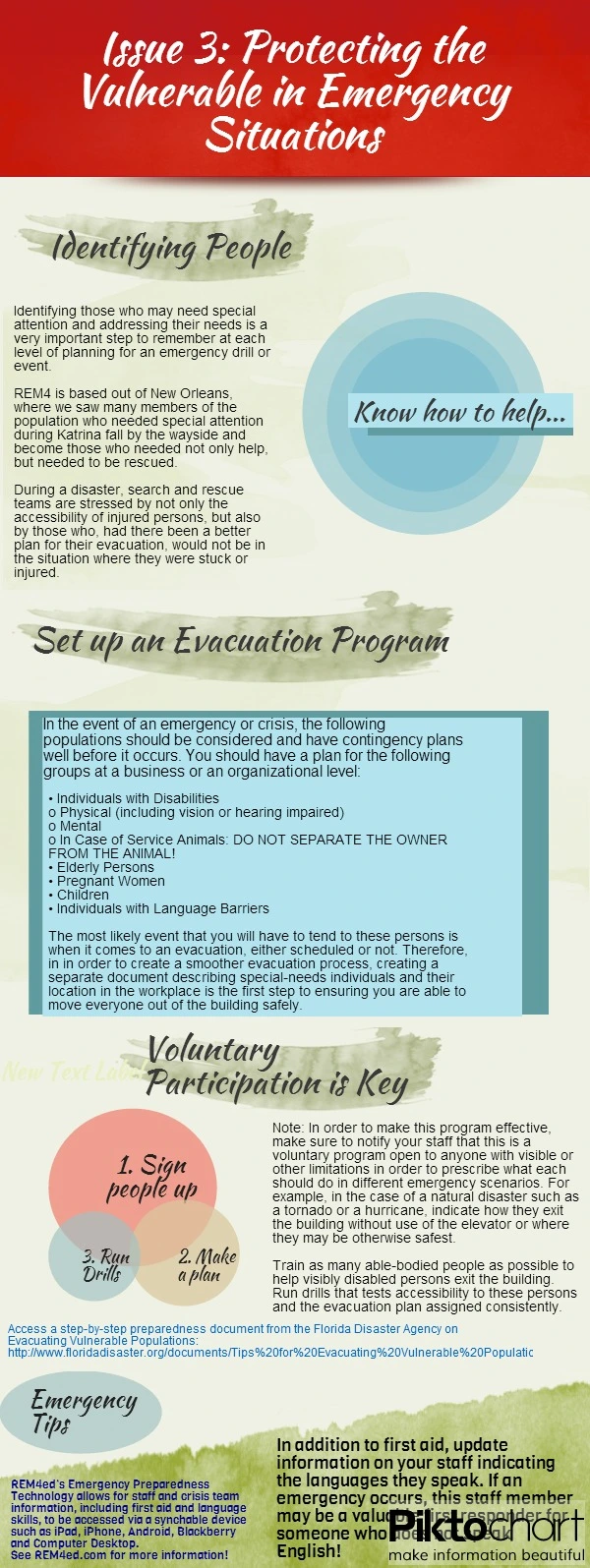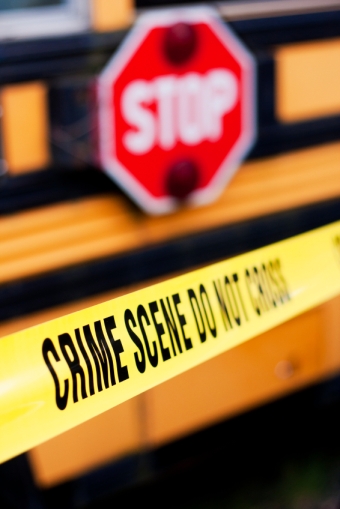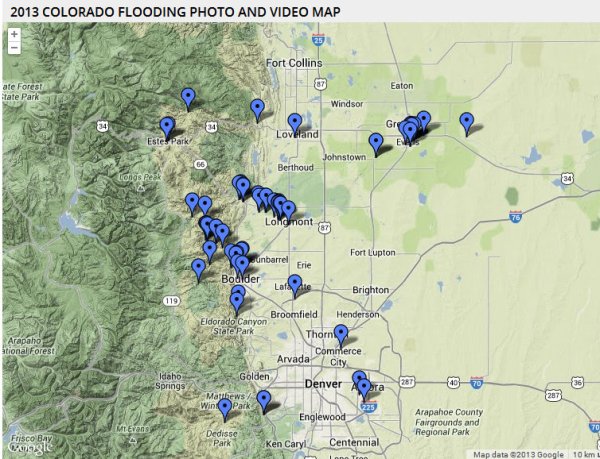 Welcome to the Summer Hazards Series! We all know that things don’t really heat up until July and August anyhow, so we’re dedicating a few blogs to (mostly) natural disasters that tend to pop up when you especially wish they wouldn’t: during precious vacation time. Each summer, wildfires have become an inevitable form of destruction in the U.S. Since our wild lands provide beautiful scenery and boast a slower pace of life, these communities are growing as alternatives to the city to live and work. However, with increased population movement in these formerly less-populated areas, attention to emergency management, business continuity, and mitigation efforts should be increased to match the population risk.
Welcome to the Summer Hazards Series! We all know that things don’t really heat up until July and August anyhow, so we’re dedicating a few blogs to (mostly) natural disasters that tend to pop up when you especially wish they wouldn’t: during precious vacation time. Each summer, wildfires have become an inevitable form of destruction in the U.S. Since our wild lands provide beautiful scenery and boast a slower pace of life, these communities are growing as alternatives to the city to live and work. However, with increased population movement in these formerly less-populated areas, attention to emergency management, business continuity, and mitigation efforts should be increased to match the population risk.
In how many states do wildfires occur? In the past ten years, wildfires have burned and devastated over 5 million acres in California, Georgia, Florida, Utah, Idaho, Arizona, New Mexico, Idaho, Nevada, North Carolina, Texas, Colorado, Montana, Oregon and Washington. Due to their unpredictable nature and ability to affect the homes and businesses of communities throughout the U.S., identifying measures to prepare for and protect communities from the looming threat of fire, and subsequent rains that may bring in flood waters, should be on the list of priorities for emergency managers.
You may think: I’m not in a wild land area- why should I know how wildfires can affect me?
Business continuity relies upon looking at the larger system. While many businesses may not be affected by wildfires directly, their consumers or business partners may. For example, many forested areas are residential due to seasonal recreation, and thus the population may increase only in certain seasons, thus creating a seasonally-reliant economy. In case of nearby devastation, there may be recreational hubs, homes, and businesses lost to members of these communities, and thus creating negative impact on a county-or-state-wide level.
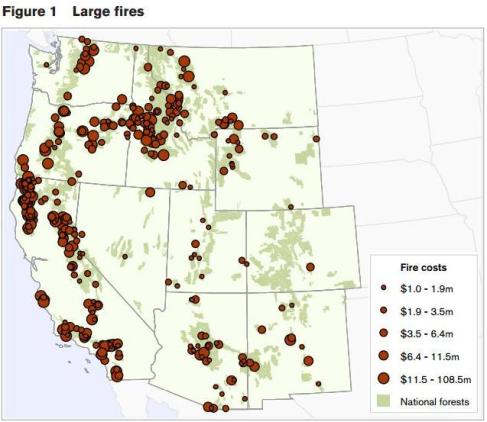
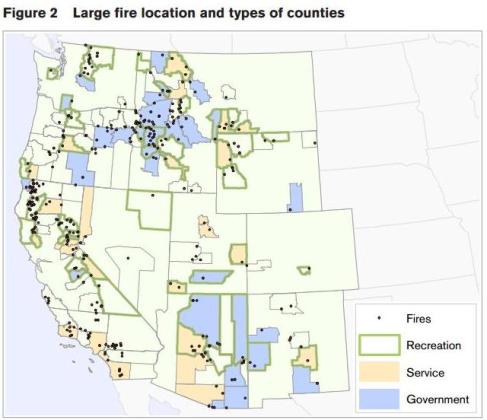
The Effect of Wildfires on Large Labor Markets, University of Oregon, Institute for a Sustainable Environment, 2012
According to FEMA, in conjunction with the U.S. Forest Service, we provide the following descriptive resources:
Let’s get technical: How do wildfires spread?
Wildfires spread by radiation, convection and firebrands.
Radiation is the process by which wildfires heat up the surrounding area. This is similar to the way a radiator heats a room during the winter but at considerably higher temperatures. Radiant heat from a wildfire can ignite combustible materials from distances of 100 feet or more.
Flames often occur within columns of heat known as convection columns and can ignite anything flammable they contact. Typically, the flames in a convection column rise straight up, while cooling air descends and hot air rises in a cyclical pattern forming a column of looping heat.
However, winds can cause flames to rise diagonally, or even nearly horizontally, extending the reach of the flames. (Photo shows illustration of convection currents.)
The third way a wildfire spreads is through firebrands, which are burning materials that are blown by wind from one place to another. Winds can blow firebrands more than a mile away from their source, starting new fires wherever they land. (Photo shows firebrands being blown by winds.)
In addition to the three ways wildfires spread, there are three primary conditions that affect how quickly and with what intensity a wildfire spreads. They are:
Fuel conditions refer to the amount, density, and flammability of fuel. Fuels are anything that will burn, including:
- Vegetation—Whether a tree in the woods or a shrub in a garden, vegetation can fuel a wildfire.
Because dead plants burn very easily, the presence of dead vegetation increases the likelihood of a more intense and faster spreading wildfire.
Live, green, wet plant life does not burn easily and may slow a wildfire’s progress. However, in a wildfire, all vegetation can eventually act as fuel. The density of vegetation, or how close plants are to one another, can also impact the ability of a wildfire to spread.
- Structures—Both the contents and the building materials used can greatly impact the spread of a wildfire. For example, a cedar-shake or wood-sided home will burn more quickly than a brick home.
The greater the structural density, or how close structures are to one another, the faster the wildfire will spread.
Weather has an impact on the spread of a wildfire. High temperatures, low humidity, and high winds increase the likelihood that a wildfire will spread from wildlands to inhabited areas. In contrast, cold, humid, and calm conditions inhibit a wildfire’s spread.
Even topography affects the speed at which a wildfire spreads. Wildfires move more quickly up a hill than down.
A wildfire moving up a slope causes hot gases to rise in front of it. The hot gases pre-heat and dry vegetation ahead of the wildfire, causing it to catch fire more rapidly. A grass fire can advance four times faster moving up a slope than on level ground.
Courtesy of: http://training.fema.gov/EMIWeb/IS/courseOverview.aspx?code=IS-320
What can I do to prevent forest fires? Well, contrary to Smoky the Bear telling you that putting out your campfire is enough, the material your building is made from, the proximity of buildings to one another, and the amount of trees all play a part in assessing risk near your community. The fire manager in your town or area should be able to work with you to provide better insight into whether your building or those around you are at risk for wildfire hazards.
http://www.fs.fed.us/fire/safety/index.html






